Listen to the companion podcast here
Autism Spectrum Disorder (ASD) is a neurological condition causing differences in development, skill display, or sensory, social, or behavioral processing. It manifests in manners unique to each child and adult across the spectrum. One in sixty-six Canadian children and youths have been diagnosed with ASD, but the number of people with autism is estimated to be higher, due to lack of diagnosis or prejudice.
Canada provides universal healthcare, but people with autism and their families struggle significantly against many barriers and a lack of service. Support is commonly offered following a diagnosis, but what happens when an individual either cannot get one, or is considered too old’ for one?
I talked about the problems people face to get a diagnosis with Deborah Pugh, the former executive director of Autism Community Training (ACT) in British Colombia. Although we spoke near 7 a.m. her time, she was chipper and patient. Referring to a two-year waiting list in British Colombia for professional services, she said, “There is no province in Canada that really is providing any leadership anymore about how to achieve early diagnosis and ongoing support.”
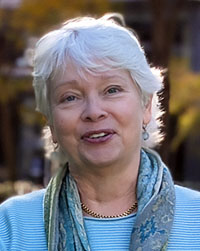
Long waiting lists are experienced country-wide, lasting anywhere from a few months to upwards of four years. Ontario’s government program currently counts over fifty-six thousand children on its list and at least a year’s waiting time, exacerbated further during the pandemic. Almost seventy-four percent of surveyed caregivers agree that these stagnant lists are the great hindrance to receiving services, Autism Ontario reports. Some Quebec parents have likewise found public waiting lists bordering on four years.
Calling this situation a human rights issue, Pugh said that these long waiting lists are an area of stress for families, especially to those who feel uninformed and overwhelmed. She said, “When a family doesn’t understand that a child isn’t just naughty, but is dealing with a very complex, invisible condition, it makes it really challenging for them on their own.”
For the most part, this situation is blamed on lack of funding and autism being seen as an ‘invisible’, easily overlooked condition. Pugh says that while many doctors are unwilling to take on a diagnosis that is considered more time consuming and expensive, ultimately it is an issue of priority, and the service gaps become even larger given the provinces’ respective differences and the further dividing of responsibilities within regions. “The federal government funds the provinces to provide health services, but it’s often the provinces that set their priorities. If you’re living in a province where the focus is on hip replacements for seniors, that’s the waiting list they want to deal with.”
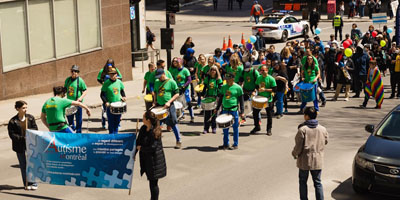
She says that a national strategy should include investing in professional development to increase the number of specialists. “We know more, but we actually can’t operationalize it because we don’t have the essential professionals to support them,” Pugh says, arguing that attention has to be given to root issues that produce life-long changes. Investing in professionals is critical since early diagnosis and intervention are vital, otherwise the result may be continuous struggle and self-esteem issues. Diagnosis provides a way for parents to seek support and information that would afford their child appropriate accommodations.
Pugh says that early diagnosis also can prevent the alienation and confusion that can occur with older individuals. “Often, a diagnosis later in life comes as a revelation, when you don’t have that self-knowledge about why your life has been so difficult. For many, I think it’s a huge unnecessary burden that autistic adults and teens carry.”
After the age of eighteen, access to diagnosis and services essentially disappears. Perceived to need less or no support, adults are left out of statistics, records, and funding support.
Accommodation for autistic individuals in everyday life is almost non-existent, although providing such adjustments could be very simple, according to Bruce Petherick, an advocate for Autism Canada who received his diagnosis in adulthood. “I’m seen as needing lesser regular support than some other autistic people, and there’s fundamentally nothing for me at all”.
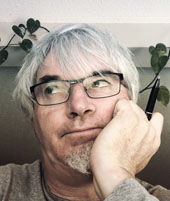
Petherick is a creative person, having toured the world as a musician and sound designer before working with Autism Canada. He has sensory difficulties, and told me about how helpful it would be if grocery stores, for example, had an hour of the day where the lights and music could be dimmed. Some communities are making these kinds of considerations. For example, a few schools in the US hold ‘silent proms’, where the music volume is controlled through individual headphones, accommodating sound sensitivity.
Adults with autism can face multiple, co-existing physical and mental afflictions that they may have to address alone. Many can have issues such as epilepsy, sleep disorders, ADHD, weight struggles, or mental health problems. However, 70% of pediatricians do not support young people with ASD in the transition to adult healthcare services, according to Canadian surveys.
Governments give a lower priority to older individuals. In Ontario, for example, despite waiting lists of months or years for diagnosis and support services, in 2019 Premier Doug Ford’s government cut funding for families caring for autistic children under six years old. After the age of six families receive even less. My own eighteen-year-old sister in Montreal has been unable to be placed on a waiting list for the last few years. She struggles with OCD as a result of her autism, but as Petherick says, “You cannot treat a comorbidity like it is separate from their autism”. So, this leaves out the option of seeing a counsellor solely concerning her OCD, and a professional concerning her autism is evidently unavailable. As my sister says, “It’s frustrating because it makes me feel like I understand myself less, it feels like I’m not seen.”
As a result of facing challenges alone, being overlooked in social and support systems, being misunderstood, isolated, and told their behavior is wrong, adults with autism have higher rates of depression and anxiety, and almost three times the rate of suicidal thoughts or ideas. These challenges lead to higher levels of suicide, chronic unemployment, homelessness, and exploitation, particularly of young autistic women. Almost eighty percent of autistic children have one or multiple mental health conditions. “We often feel we’re not worthy,” Petherick told me, “Because when we need help, no one can give us the help we need. It does bring our self-esteem down.”
I also spoke with Estée Klar and her son, Adam Wolfond, who was diagnosed with autism at eighteen months. He is a non-verbal adult who speaks through a text-to-speech device. They started the dis assembly collective to sustain a creative space dedicated to neurodiversity. They are intelligent, unique, and passionately opposed to ‘one size fits all’ solutions. The most common of these is referred to as ABA therapy – Applied Behavior Analysis. While ABA aims to increase social abilities, it is criticised for trying to ‘cure’ autistic behaviors and characterizing them as ‘wrong’. ABA is the most widely accessible service that individuals are likely to experience.
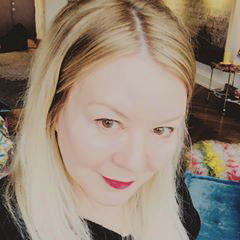
Klar is concerned with the widespread adoption of ABA therapy. “It has infiltrated literally every aspect of an autistic person’s existence, to the point that schools have adopted it and also conceive of autism as a problem,” she says, arguing that much of the reason ABA is so widely used is the convenience and standardization it allows an impatient system to adopt. “As long as we have that, and we don’t acknowledge diversity in all of these contexts, we’re going to think of autism as on the outside, needing to fit inside, and that’s always going to precipitate cure and remedial therapies.”
Speaking of his own experience, Adam Wolfond stresses the same message. “We need to teach people to vary the ways of love and support and the ways we think about care outside the system. They can be very helpful, the way my attraction to starting a movement for liberation has been.”
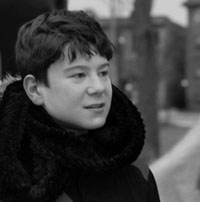
They said that communities would benefit from relational support that is more one on one, geared towards support and accommodation instead of remedial ‘therapy’ and assimilation. Diagnosis, while important, should not lead to generalizations about what individuals experience and how they should be ‘treated’. Klar said that it was painful to see children in ABA therapy picked up and moved against their will, or asked to do things outside their comfort level. Wolfond says, “We need to invest in understanding people who manage the way I do, with supports so that I could do many things.”
Klar said that it was simple to accommodate his being non-verbal by giving him his text-to-speech tool. He is now the first non-verbal person to be receiving a masters degree from Concordia University. He is an accomplished poet, and works alongside his mother at dis assembly. Klar says they are both flourishing, “We need to rethink what diversity means, and not think about diagnosis as a means to cure or remediate. Once we got out of that system, our lives just went boom!”
What is evident from all speakers is that awareness and knowledge are vital both in and out of federal and provincial systems. Community awareness can drive governments to respond and introduce strategies and increased funding and focus. An increase in knowledge can facilitate proper interventions, interactions, and accommodations for each province’s autistic population. People with autism should not be viewed as oddities or as burdens, although the system largely likes to set them aside as so. They cannot all be treated as one or the same when in fact they are each diverse, creative, and delightfully different as individuals. Canada cannot claim to provide ‘universal’ health care while neglecting those considered to be invisible. By incorporating, seeing, and learning about people with autism and how they can be supported, we can build a better community for both neurodiverse and neurotypical people together.



